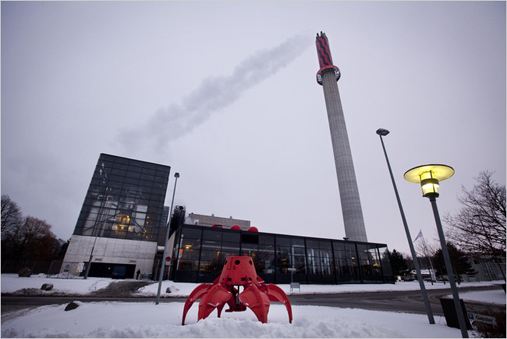Denmark’s waste-to-energy solution profiled
The New York Times runs a very informative piece on the success and prevalence of waste-to-energy plants in Denmark, where they constitute the mainstream of garbage disposal and produce a substantial amount of the energy supply. Denmark hosts 29 of these facilities, which burn non-recyclable garbage to produce heat and electricity while filtering and capturing pollutants like dioxin and mercury rather than emitting them. Denmark has ten more plants on the way. There are about 400 across Europe.
The Times goes to some lengths—and produces a valuable information graphic—drawing comparisons between Denmark and the US, where there are 87 garbage-burning power plants, almost all of which were built at least 15 years ago. (There are none currently in construction, though there might be some on the horizon.) Reticence to invest in or build waste-to-energy plants in the US, according to an EPA official, is attributed to a host of factors: the relative abundance of exploitable property for landfills (the European Union restricts the creation of new landfill sites), fear of undercutting recycling and waste reduction programs and negative public perception. This despite federal research advocating for waste-to-energy as the most environmentally friendly waste management solution for non-recyclables.
NIMBYism is, of course, always a factor; many people do not want a garbage-burning plant in their backyard. The story notes that Danes have generally embraced the facilities, which are sited in neighborhoods of a range of income brackets and provide lower-cost energy to those neighborhoods. The Danish facilities mostly look like power plants, but given the baseline rigor of Scandinavian design, that’s still quite handsome (see image above). The Times also posts a sidebar on some European waste-to-energy plants that have grander architectural ambitions, presumably to appease lingering aesthetic concerns of local residents.






